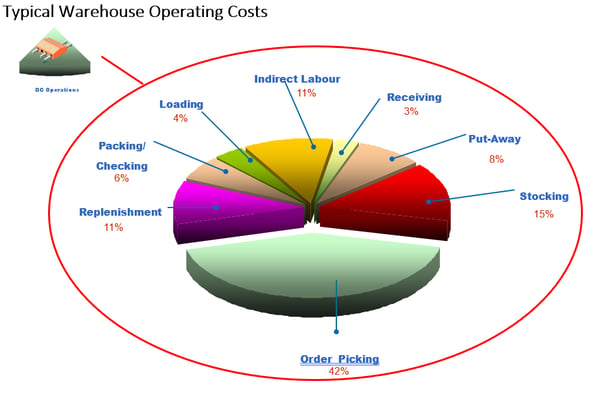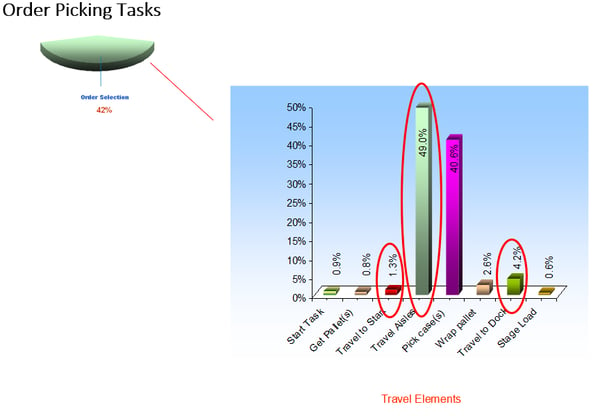Using Warehouse Automation – Optimising Man and Machine for Maximum Efficiency?


Warehouse automation has been around for decades and has helped distribution centers improve productivity and downtime tremendously, but one of the key challenges has been that the material handling equipment or automation has been operating in a silo from the rest of the distribution center and supply chain. This article discusses the foundational elements you’ll need for success and how you can ensure you have an end to end solution that fully optimizes all of the resources in your warehouse
Warehouse Automation – Foundations for Success
Whether you’ve been using warehouse automation for years or are about to embark on the process for the first time, its critical that with each project you consider the following foundation elements for success
-
Assemble the right design team – start with the end goal in mind and ensure that you embark on the right design process and engage the analytical and operational implementation teams right from the start. Without this level of forethought and cultural buy-in, the process becomes more of an issue than it does a benefit and actually takes longer to implement than a traditional approach.
Its important to assign a specific person or team that will be responsible for handling the implementation and selecting the functionality that will be needed. This team should then be involved in all aspects of the planning and process creation. Companies that delay during this step may find themselves struggling to make a quick hiring decision and having the team trained and ready
-
Optimize your existing processes and identify areas of improvement prior to automation – Warehouse automation is expensive and should focus on the most important areas where ROI can be achieved. Some areas are obvious such as needing conveyors to transport cartons rather than paying for people to move the cartons from point A to point B. But quite often companies fail to examine the flow of product through the warehouse, traffic patterns, and overall layout of the facility in detail. In addition, you should try to standardize your processes by reducing potential variation, which saves time and money, and reduces errors. Measure each activity in the warehouse to establish a baseline against your internal and best practice metrics to identify where improvements can be made. Once you know where to improve, determine how to make those improvements and identify a target metric to measure implemented improvements. You may find that many of these improvements can be made by subtle process changes and/ or configuration changes in your existing WMS
-
Automate where it makes sense – but understand the ROI.
“Automation has become much more affordable the last decade or so in the face of just about everything else (labour, space, time) escalating. The idea of an AS/RS, put to light or even voice picking systems can be intimidating, but these methods are proven across every industry. The key is to ensure you understand and benchmark which type of technology is right for your operation, product and order mix and then you must understand the payback, not just the benefits.”
-
Start by focusing on reducing travel time - In most warehouses order picking accounts for roughly 40-50% of all activity time

and within the order picking activity roughly 50% of the time is spent travelling to and from pick locations

By simply reducing the travel time in your facility you will see a massive efficiency gain
Pulling it all together – Coordinating Man and Machine in the Warehouse
Until recently most warehouses that warranted automation had some, all or variants of the following technology components that enabled them the ensure they were processing their orders in the most effective way
- Warehouse Management System
- Various Pieces of Automation such as AS/RS, conveyor systems, pick to light, etc
- Warehouse Control System which is responsible for directing each piece of warehouse automation and typically needs several interfaces developed to and from a warehouse management system
- Then came the Warehouse Execution System which aimed at being the point that ties together the warehouse management system and the various warehouse control systems
Recently Manhattan Associates warehouse management system has been enhanced to include a warehouse execution system that coordinates all activities and ensures a single point of control and coordination and the following benefits
MORE COMPLETE OPERATIONAL CONTROL
WCSs are purposely designed to be limited in scope, focusing purely on the equipment aspect in a warehouse. Conversely, a WMS has always been a holistic technology. It’s built to coordinate warehouse resources from orders and inventory to people and equipment. Advanced solutions today are finally able to consider both man and machine to orchestrate fulfillment.
WMS has other advantages as well. It’s the only technology with command and control of all work, including tasks outside of fulfillment like receiving and inspection of product, yard management, value-added services and more. Incorporating a vendor-agnostic WES is critical because it allows you to seamlessly integrate any automation or robotics technology – meaning you can capitalize on any innovation as it emerges.
In the end, a WCS offers a close-up view of one part of your operational picture. But the best WMS technology can coordinate humans’ actions and workflows with robotics’ consistency to make it all work together.
THE CAPACITY TO LEARN
In addition to better orchestration, the right WMS also uses machine learning to improve processes. Using artificial intelligence, the system creates a baseline by predicting how long tasks should take. As work is executed, it analyzes the results. Then armed with real data, the WMS couples advanced orchestration logic with real-time awareness of capacity to optimize operations.
The resulting improvements lead to reduced dwell time, shorter order cycle times and more accurate allocation of work. Meaning you can on more orders, increase service levels and maximize asset utilization.
Insert CTA, etc
THE RIGHT TECHNOLOGY FOR THE JOB
People and robots are constants in the DC and both will play major roles going forward. The key to better productivity lies in helping them work together. Unlike WCS, advanced WMS technology – with a vendor-agnostic WES built in – takes a holistic view of operations to bring labor and automation together. And then uses machine learning to maximize efficiency.
It allows you to utilize all your assets. Synthesize any type of automation you want to add. And continually optimize your operation. In short, the right WMS gives you the best of man and machine. So no matter what challenges arise, you’ll get the most from your operations.
From benchmarking your warehouse, to labour optimisation and managing returns, we’ll help you run a lean operation. Download our Practical Guide to Optimising Your Warehouse
Stay up to date with the latest trends in the supply chain industry. Subscribe to Supply Chain Matters, and we’ll send all of our latest helpful tips and tools, straight to your inbox.
TAGS
- WMS (51)
- Warehouse Best Practice (46)
- Implementing a WMS (29)
- Managing your warehouse (19)
- Omni Channel (18)
- eCommerce (18)
- Blog (16)
- Supply Chain Best Practice (16)
- Customer Journey (9)
- Mid-Level (8)
- Warehouse optimisation (7)
- General Tips (5)
- Industry General (5)
- Information (5)
- Trends (5)
- managing your Supply Chain (5)
- saudi arabia (5)
- Press Release (4)
- smart warehouse (4)
- 3PL (3)
- News (3)
- ERP (2)
- Entry-level (2)
- ROI (2)
- Case Study (1)
- OMS (1)
- Picking (1)
- Solution-Specific (1)
- Transport Management System (1)
Take A Look At The Results Of A Successful WMS Implementation.
See how Tarsus Distribution, in collaboration with SCJ boost overall efficiency by 60%




